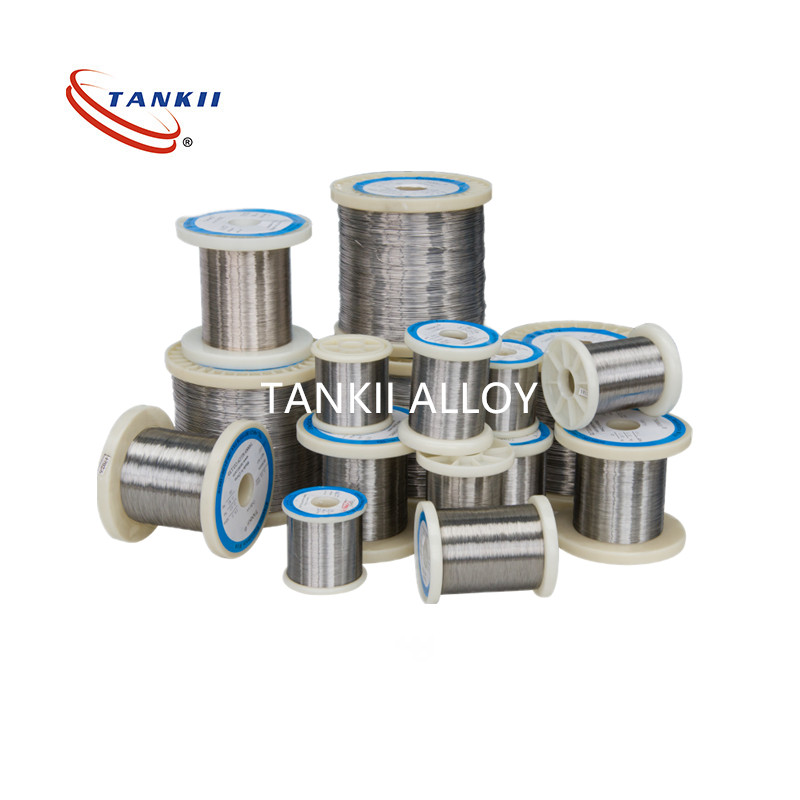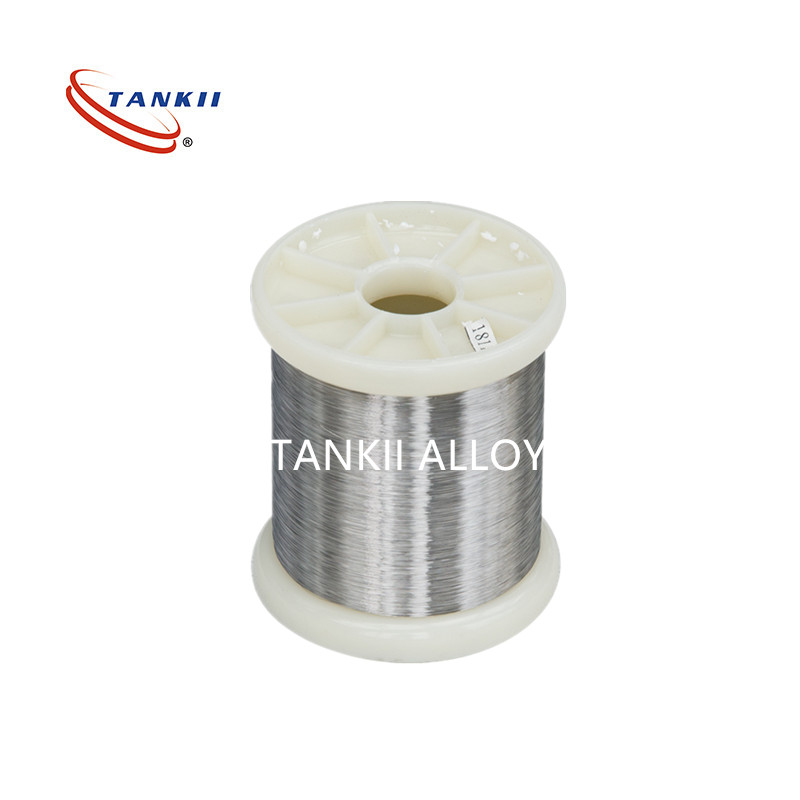Ni90Cr10 NiCr 90/10 Nickel Chrome Alloy terata chromel Alumel Thermocouple Head Parts
Ni90Cr10 NiCr90/10 terata ea nickel chrome alloyterata ea nichromelikarolo tsa hlooho ea thermocouple
China mofani oa thepa nichrome 90 Ni90
Ni90Cr10 ke motsoako oa austenitic nickel-chromium alloy (NiCr alloy) bakeng sa tšebeliso ea mocheso ho fihlela ho 1200 ° C (2190 ° F). The alloy e khetholloa ka ho hanyetsa ho phahameng, ho hanyetsa oxidation e ntle le botsitso bo botle haholo ba foromo. E na le ductility e ntle ka mor'a tšebeliso le weldability e ntle haholo.
Ni90Cr10 e sebelisetsoa ho futhumatsa lisebelisoa tsa motlakase ka har'a lisebelisoa tsa lapeng le libopi tsa indasteri. Lisebelisoa tse tloaelehileng ke litšepe tse bataletseng, mechini ea ho aena, licheso tsa metsi, ho bopeha ha polasetiki ho shoa, litšepe tsa tšepe, lisebelisoa tsa tšepe tse kentsoeng ka tšepe le likarolo tsa cartridge.
Ka lebaka la thepa e ntle ea ho khomarela ea oxide e holim'a metsi, Ni90C10 e fana ka bophelo bo botle ba ts'ebeletso ha bo bapisoa le li-alloys tsa nickel-chromium tsa tlholisano.
| Lisebelisoa tsa ts'ebetso | N90Cr10 | Ni80Cr20 | Ni70Cr30 | Ni60Cr15 | Ni35Cr20 | Ni30Cr20 | |
| Sebopeho | Ni | 90 | Phomola | Phomola | 55.0~61.0 | 34.0~37.0 | 30.0~34.0 |
| Cr | 10 | 20.0~23.0 | 28.0~31.0 | 15.0 ~ 18.0 | 18.0-21.0 | 18.0-21.0 | |
| Fe | ≤1.0 | ≤1.0 | Phomola | Phomola | Phomola | ||
| Boholo ba mochesoºC | 1300 | 1200 | 1250 | 1150 | 1100 | 1100 | |
| Sebaka se qhibilihang ºC | 1400 | 1400 | 1380 | 1390 | 1390 | 1390 | |
| Boima ba g/cm3 | 8.7 | 8.4 | 8.1 | 8.2 | 7.9 | 7.9 | |
| Ho hanyetsa ho 20ºC((μΩ·m) | 1.09±0.05 | 1.18±0.05 | 1.12±0.05 | 1.00±0.05 | 1.04±0.05 | ||
| Ho lelefatsa ha ho phatloha | ≥20 | ≥20 | ≥20 | ≥20 | ≥20 | ≥20 | |
| Mocheso o khethehileng J/g.ºC | 0.44 | 0.461 | 0.494 | 0.5 | 0.5 | ||
| Thermal conductivity KJ/m.hºC | 60.3 | 45.2 | 45.2 | 43.8 | 43.8 | ||
| Coefficient ea katoloso ea mela a×10-6/ (20~1000ºC) | 18 | 17 | 17 | 19 | 19 | ||
| Sebopeho sa Micrographic | Austenite | Austenite | Austenite | Austenite | Austenite | ||
| Lintho tsa Magnetic | E seng ea makenete | E seng ea makenete | E seng ea makenete | Matla a khoheli a fokolang | Matla a khoheli a fokolang | ||
boholo:
OD: 0.3-8.0mm,
| Lithapo tsa ho hanyetsa | ||
| RW30 | W.Nr 1.4864 | Nickel 37%, Chrome 18%, Iron 45% |
| RW41 | UNS N07041 | Nickel 50%, Chrome 19%, Cobalt 11%, Molybdenum 10%, Titanium 3% |
| RW45 | W.Nr 2.0842 | Nickel 45%, Koporo 55% |
| RW60 | W.Nr 2.4867 | Nickel 60%, Chrome 16%, Iron 24% |
| RW60 | UNS NO6004 | Nickel 60%, Chrome 16%, Iron 24% |
| RW80 | W.Nr 2.4869 | Nickel 80%, Chrome 20% |
| RW80 | UNS NO6003 | Nickel 80%, Chrome 20% |
| RW125 | W.Nr 1.4725 | Tšepe BAL, Chrome 19%, Aluminium 3% |
| RW145 | W.Nr 1.4767 | Tšepe BAL, Chrome 20%, Aluminium 5% |
| RW155 | Tšepe BAL, Chrome 27%, Aluminium 7%, Molybdenum 2% | |
CHROMEL vs ALUMEL e sebelisoa ho oxidizing, inert kapa omileng ho fokotsa sepakapaka. Ho pepesetsoa vacuum ka nako e khuts'oane feela. E tlameha ho sireletsoa moeeng oa sebabole le oxidizing hanyane. E ka tšeptjoa ebile e nepahetse mochesong o phahameng.Chromel: Chromel ke motsoako o hakanyetsoang ho 90% nickel le 10% chromium. E sebelisoa ha ho etsoa li-conductor tse ntle tsa ANSI Type E le mofuta oa K thermocouples, lisebelisoa tsa ho lekanya mocheso o nang le li-conductor tse peli tse fapaneng.
Lihlopha tsa lihlahisoa
-

Mohala
-

E-mail
-

Whatsapp
-

WeChat
Judy
150 0000 2421
-

Holimo















